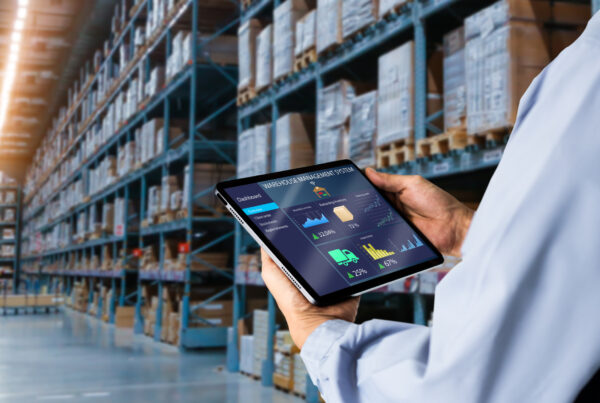Transitioning from a crowdfunding campaign to eCommerce can be an exciting and challenging shift for any business. It signifies growth and a prosperous future ahead. As you endure the challenge, keep your foot on the gas and think proactively. Note that there are distinct differences between crowdfunding and eCommerce funding. Understanding the two can help you time and execute your transition properly.
Crowdfunding provides an excellent opportunity to validate your product or idea and get it off the ground, but eCommerce enables you to scale and grow your business beyond the initial funding stage. As you prepare to transition to eCommerce, choose the best platform(s) – this can make or break your success. Since day one, you should have prioritized partnerships with customers and suppliers, continue to do so. Lastly, make sure you have enough inventory to support growth while maintaining healthy cash flow, even if that means using inventory financing. At Kickfurther, we are here to help you make the transition and can fund up to 100% of your inventory, with flexible repayment terms you control.
Interested in moving from crowdfunding to eCommerce? Here’s our best advice and hot tips.
What is crowdfunding and what can it be used for?
Crowdfunding is a method of raising capital for a project or venture by obtaining small contributions from a large number of individuals, typically via the Internet. It has become an increasingly popular way for businesses to raise funds, especially for startups or small businesses that may have difficulty accessing traditional forms of financing.
Crowdfunding can be an effective option for businesses of all stages but is especially effective for startups or early-stage businesses that don’t have a track record of sales or revenue. By utilizing crowdfunding, businesses can raise the capital needed to launch or develop products and can be used as a catalyst to expand sales or reach a larger target audience. While it’s to thank for the success of many ventures, there are risks associated so educate yourself and keep your eyes open. Nonetheless, as a business owner, all decisions are risk vs. reward-based, so do what you do best.
No matter the size or stage of your business, crowdfunding can provide the means necessary to validate demand for your products, thus allowing you to eventually transition into the world of eCommerce.
When should you transition from crowdfunding to eCommerce?
After earning market validation from a successful crowdfunding campaign, you may be ready to dive into the world of eCommerce. Determining when to make the transition will depend on a variety of factors, including the type of business, the product being offered, and the level of demand generated through the crowdfunding campaign.
Before making the transition, your business should have a clear understanding of the level of demand for your products, including a plan to continue generating sales beyond the crowdfunding campaign. Your business should also have an established brand identity that resonates with its target audience, highlighting the importance of having a strong consumer base. Once those are established, ensure your business has a plan for scaling operations beyond the crowdfunding campaign and has the infrastructure in place to handle increased demand for your products. If you’ve been using effective inventory tracking systems since the beginning, this will help you gauge how to keep up with growth without overstocking or understocking inventory.
What is eCommerce?
eCommerce, short for electronic commerce, refers to the buying and selling of goods and services over the Internet. It involves online transactions between businesses and consumers, or between businesses themselves. eCommerce transactions can involve physical products that are shipped to customers, digital products that are downloaded, or services that are provided remotely.
In our oh-so-busy lives – eCommerce shopping has changed the way we shop. On the flip side, it’s changed the way businesses do business. As you enter the competitive eCommerce marketplace, pay attention to the small details, that customers will notice. Find ways to deliver personalized experiences without any human contact. eCommerce is extremely experience-based just as is in-person transactions, therefore your eCommerce partner holds a lot of weight on your customer’s experience.
What are the top eCommerce sites?
Many eCommerce sites are operating globally. You may be familiar with all or some of the ones highlighted below, and if you’re not, you should be. Whether you are selling on popular eCommerce platforms or competing with them, an understanding of how they work can benefit you.
#1. Amazon
Amazon is the world’s largest online retailer, selling a vast range of products including electronics, books, clothing, and household items.
#2. Alibaba
Alibaba is a Chinese eCommerce company that operates several online marketplaces, including Alibaba.com and Taobao, which are popular in China and other parts of Asia.
#3. eBay
eBay is an online marketplace that allows individuals and businesses to buy and sell goods, from electronics to collectibles.
#4. Walmart
Walmart is one of the world’s largest retailers, with a significant presence in both physical stores and eCommerce.
#5. Shopify
Shopify is a leading eCommerce platform that enables businesses to create and operate their own online stores.
#6. Etsy
Etsy is an online marketplace that specializes in handmade and vintage items, as well as unique and creative products.
#7. Target
Target is a large retailer that operates both brick-and-mortar stores and an online store, selling products ranging from clothing to home goods.
6 Tips for Transitioning from Crowdfunding to eCommerce
Tip #1 – Create a website: Websites are a valuable way to not only sell products but also share information about your brand. Building one sooner than later, is a wise investment, but a website is especially valuable as you transition to the eCommerce space.
Tip #2 – Stock plenty of inventory: To meet the demand generated through crowdfunding campaigns and beyond, it’s crucial to stock plenty of inventory. When we say plenty we mean just the right amount. Overstocking inventory can be a problem. We highly encourage business owners to utilize inventory tracking tools to understand demand, and how it changes. These tools come with plenty of other benefits too. As a business that’s new to eCommerce, you may struggle to secure inventory financing. Thankfully though, there are solutions available to help you access the funds you need for inventory. Kickfurther was founded by an entrepreneur who once struggled to find accessible and affordable inventory financing. And just like that, he turned his problem into a solution for himself and others too. For inventory funding that’s enjoyable to secure (and up to 30% cheaper than other options) visit Kickfurther.
Tip #3 – Partner with eCommerce platforms: Partnering with eCommerce platforms can help increase your online visibility and sales. Consider selling your products on popular platforms like Amazon, eBay, or Etsy, in addition to your website.
Tip #4 – Plan for the long-term: Transitioning from crowdfunding to eCommerce is a long-term strategy, so it’s important to plan accordingly. This includes developing a business plan, setting goals and milestones, and regularly reviewing and adjusting your strategy as needed.
Tip #5 – Establish a well-loved reputation: Building strong partnerships and relationships with suppliers and customers is essential for long-term success. This includes delivering excellent customer service, offering quality products, and maintaining open and transparent communication.
Tip #6 – Deliver high-quality products (and collect reviews that make you stand out): The quality of your products can make or break your eCommerce business. Make sure to deliver high-quality products that meet or exceed customer expectations. Collecting positive reviews and feedback can also help build your reputation and stand out from competitors.
Closing thoughts
Making the transition from crowdfunding to eCommerce first requires a successful crowdfunding campaign and careful preparation for the next steps, to ensure your business can meet ongoing demand and ensure long-term success. Remember, the eCommerce game is best suited for those in it for the long run, so make sure you have a plan to scale your business and the appropriate partnerships in place to ensure you can successfully make the transition into the world of eCommerce.
How Kickfurther can help
Meeting the growing demand for your products is no easy task after transitioning to the world of eCommerce, but by partnering with Kickfurther, we can help cover your largest expense – inventory! Offering inventory on consignment, we can fund up to 100% of your inventory orders with a flexible repayment plan that puts you in control. At Kickfurther, we understand you have enough on your plate to focus on growing your business and can help you secure the funds you need for inventory without forcing you to take on debt or give up equity. Why? Because when we said we got it, we meant it.
Interested in getting funded at Kickfurther? Here are 3 easy steps to get started:
#1. Create a free business account
#2. Complete the online application
#3. Review a potential deal with one of our account reps & get funded in minutes







